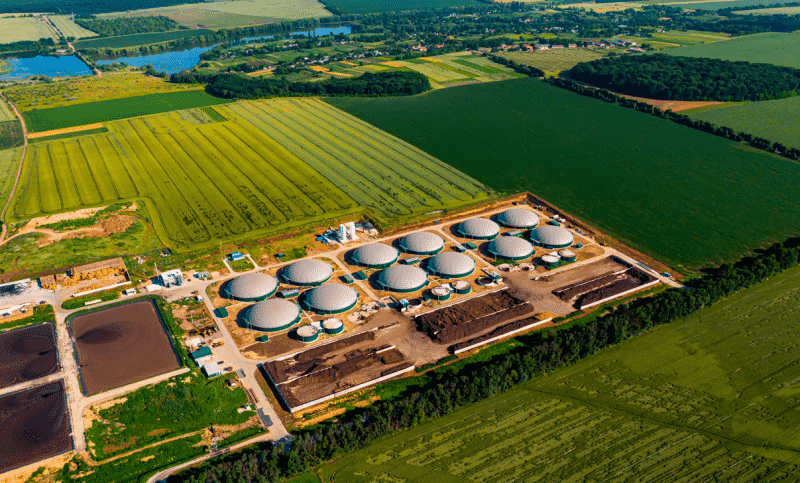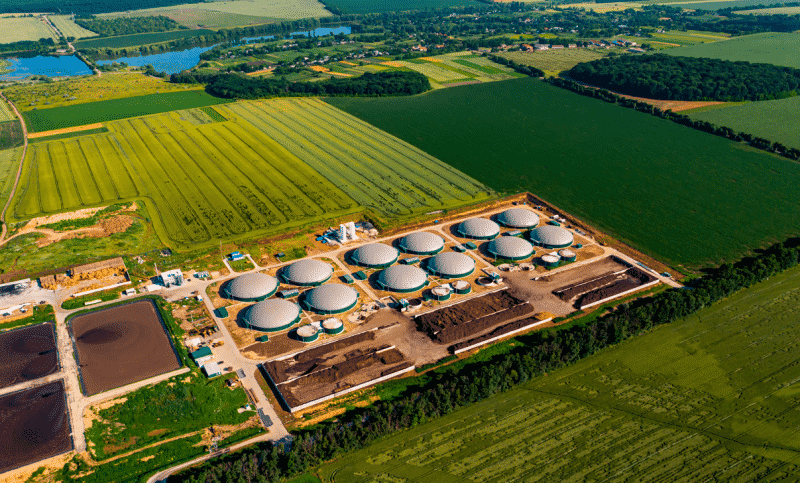Food waste can boost European energy security
Biological material from farm to fork can be converted into biomethane — a direct substitute for fossil gas
As Europe seeks alternatives to Russian gas and to keep its net zero plans on track, a big source of energy remains hidden in bins and skips across the continent. Biological waste from every part of the food industry, from farm to fork, can be converted into biomethane — a direct substitute for fossil gas. The EU plans to replace more than a fifth of its Russian gas imports in this way, cutting emissions while creating energy security. But delivering this goal requires a new policy framework to accelerate investment in new capacity.
The EU’s Repower strategy doubled the region’s biomethane production target to 35 billion cubic metres by 2030, a 10-fold increase on today’s output. The European Biogas Association estimates that meeting this goal will require building 1,000 large plants in less than eight years and almost €40bn in investment. This is tough but achievable with the right support.
There is no shortage of the waste required to make biomethane. The industry can use bio products from every part of the food system, with no need for specialist energy crops that could disrupt food production. In fact, the fertiliser created by the biomethane production process can help farmers boost food security and cut their carbon footprint while creating secure jobs in rural areas.
The European biomethane industry is ready to scale after transforming its approach to production in recent years. The small farm-based digestion units that generated most output have been superseded by a new generation of large, dedicated plants that accept waste from multiple sources and supply gas to the grid rather than burning it on-site.
For example, those built by my company, Nature Energy (Europe’s largest biomethane producer), are 10 times larger than the industry average so they produce gas far more efficiently than the old model could and capture methane effectively. If the old farm-based production method was biogas 1.0, the new industrial model the industry has developed could be called 2.0.
Biomethane capacity can be developed relatively quickly. The new generation of plants has a standardised design that means facilities can be built using local contractors — avoiding the supply chain challenges faced when developing large renewable power facilities.
Denmark shows what can be achieved using this approach. Biomethane has gone from satisfying 5 per cent of Danish gas consumption to more than 25 per cent in the past five years and could cover 100 per cent by 2030. Recent EBA research shows that several EU states including Germany, France, Italy, Spain and Poland have the right combination of infrastructure and feedstock to follow this trajectory.
But meeting the EU’s target will require quickly developing many more plants in many more places — building capacity in areas where the industry has never operated at scale before. We need the right policy support to make this happen. There are three main steps governments should take.
First: reform site selection and planning. Today it takes about 12 months to permit a biomethane plant and then 18 months for construction. Development can be sped up significantly if governments identify “go to spots” in which an accelerated planning process provides project developers with certainty more quickly. These should have easy access to the existing gas grid so we make the most of existing infrastructure.
Second, new regulation should direct biowaste to biomethane plants from a 25km radius to ensure the industry has the feedstock it needs. This would complement the EU’s broader ambition to cut the carbon footprint of the food and agricultural industries and help businesses such as supermarkets and restaurant chains, meet their own food waste and carbon targets.
Third, while biomethane is competitive at today’s gas prices and is likely to remain so for the medium term as carbon prices rise, a mechanism to set a floor price will help draw investment into the sector and accelerate the rollout. These would be set on a country-by-country basis to reflect local market conditions, similar to the “Contracts for Difference” that supported the development of offshore wind.
Biomethane can quickly make a significant contribution to European energy security and emissions reduction. The technology is ready. We now need governments to create rules that allows us to deliver at scale and pace to make the EU target a reality.
Ole Hvelplund is chief executive officer of Nature Energy, Europe’s largest biomethane producer.
Resource: https://www.ft.com/content/f584d07f-f77d-41d3-a659-5dea0f07c386

